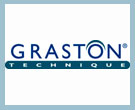A ligament injury, or sprain, occurs when ligaments (the tissues that hold bones together) are suddenly stretched or torn. Most sprains happen around joints such as the ankles, knees, or fingers. A sprain normally takes six to eight weeks to heal; severe sprains may take longer and may involve treatment to complete the recovery process.
How does a Sprain develop?
Sprains are usually caused by twisting injuries. For example, an ankle may be twisted or rotated during rapid pivoting in sports such as soccer and basketball, or by stepping off a curb or step. Sometimes a moderate or severe sprain causes problems even after the ligament has healed. A small nodule can develop in the affected ligament and cause constant friction in the joint, leading to chronic inflammation. The nerve that travels over the ligament may also be damaged, resulting in pain and tingling. Occasionally, the shock of a severe sprain causes blood vessels to spasm, reducing blood flow to the area. This condition is reflex sympathetic dystrophy syndrome.
What are the Symptoms of a Sprain?
The severity and symptoms of a sprain depends on the degree of stretching or tearing of the ligaments. In a grade 1 sprain, the ligaments may stretch, but they don’t actually tear. Although the joint may not hurt or swell very much, a mild sprain can increase the risk of a repeat injury. With a grade 2 sprain, the ligament tears partially. Swelling and bruising are common, and use of the joint is usually painful and difficult. With a severe grade 3 sprain, a ligament tears completely, causing swelling and sometimes bleeding under the skin. As a result, the joint is unstable and unable to bear weight.
Conventional medical treatments may help relieve the symptoms of ligament injury, but they often do not address the root of the problem. By strengthening structural weaknesses in the body pain associated with ligament injury may be alleviated permanently.
Natural vs. Modern Medicine’s Approach to Sprains
Modern Medicine’s Approach to Sprains
Ligament injuries or sprains are typically treated with Rest (or immobilization), Ice, Compression and Elevation (RICE), presumably to help the injured ligaments heal. Nothing could be further from the truth. These efforts result in reduced immune cell production necessary to remove the debris from the injured site. This produces formation of weakened ligament and tendon tissues – in addition to the ligament that was already injured! This is the quickest way to cause a dramatic decline in ligament function and strength. In addition, with this approach, nothing is done to repair the damaged ligament and, thus, alleviate the chronic pain that people with a severe sprain experience.
Another standard practice of modern medicine is to prescribe anti-inflammatory medications after an acute injury, but this should definitely be avoided during this time. In the end, these treatments do more damage than good. Anti-inflammatory drugs have been shown to produce short-term pain benefit, but result in long-term loss of function and pain that is even more chronic by actually inhibiting the healing process of soft tissues. Moreover, long-term use of these drugs can lead to other sources of chronic pain, allergies, and leaky gut syndrome.
The Natural Medicine Approach to Sprains
A better approach for treating acute ligament injuries and sprains is through Movement, Exercise, Analgesics and Treatment, or MEAT. While immobility is detrimental to soft tissue healing, movement is beneficial, as it improves blood flow to the area, removing debris and initiating the healing process. If movement to the joint is painful, the isometric exercises – contracting muscles without moving the affected joint – are recommended.
If you are interested in more information about natural treatments or to schedule an appointment, please contact Dr. Laboret at 972-671-5263.
Disclaimer: The preceding is to provide information about relief and the benefits that may be derived. It is not intended to claim a cure for any disease or condition. It should not take the place of your doctor’s advice or treatment.






